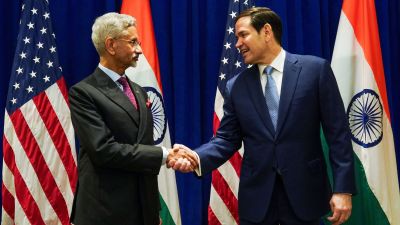Net trembles, breaks myth of networked globe
A Quake that snapped undersea cables wiring Asia to the world has exposed the vulnerability of the Net.

A Quake that snapped undersea cables wiring Asia to the world has exposed the vulnerability of the Net. Repair ships in the Luzon Strait between Taiwan and the Philippines are trying to snag at least six cables that were damaged in a massive December 26 earthquake off the coast of Taiwan. The mangled cables are out of reach of remotely controlled submersibles often used in such work. By the latest estimates, the task won’t be finished until at least mid-February.
While the earliest trans-Atlantic lines bore messages in Morse code, the cables near Taiwan carried 90 percent of East Asia’s voice and Internet traffic. A month after the earthquake, services in the region were still not back to their full capacity. The disruption to data traffic underscores how much the virtual world still depends on the low-tech network of physical cables, wires and microwave transmitters that gird the globe— and how vulnerable services migrating to the Internet can be. “We put all our eggs in a small number of baskets,” said Geoff Huston, chief scientist at the Asia Pacific Network Information Centre in Brisbane. “And this was the worst possible case of cable snap.”
To be sure, the damaged lines aren’t affecting most users now, aside from slow connection speeds and a few inaccessible sites. But for a few days after the quake, international phone-service outages and e-mail delays of several hours or more were widespread throughout East and Southeast Asia.
Telecom operators quickly rerouted traffic away from the damaged area, beaming voice over satellites and sending e-mails scurrying along alternate routes. Taiwan’s Chunghwa Telecom said in some cases Internet data sent from Taiwan to Hong Kong, only some 650 km away, were going through routers in the US. And Singapore Telecom said its US-bound traffic was taking a detour Down Under — through an undersea cable west of Australia.
The disruption was bad for consumers of “real time” data—online stock quotes, voice calls made over the Internet through services like Skype, and multiplayer online games that chew up bandwidth.
The outage challenges assumptions about the fully wired world to come, in which Internet devices will jabber to each other without the need for human input. It may not be a disaster if your cell phone can’t get through to your car, muses Hong Kong Internet pioneer Pindar Wong, but what if your pacemaker gets cut off from your doctor’s computer across the Pacific? It’s not clear how devices, rather than generally tolerant human beings, would deal with delays and outages. “This was a wake-up call,” says Wong.
–Johnathan Adams
Photos


- 01
- 02
- 03
- 04
- 05





























